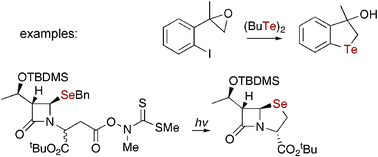Taming the free radical shrew – learning to control homolytic reactions at higher heteroatoms
Abstract
Free radical chemistry has come a long way in a relatively short period of time. Armed with mechanistic and rate constant data, the synthetic practitioner can now apply free radical chemistry to the synthesis of many different classes of target molecule with confidence. This Feature Article highlights progress made in the understanding and application of free radical reactions at main group higher heteroatoms and demonstrates how this knowledge can be used to construct interesting higher heterocycles, many of which exhibit biological activity, through the use of intramolecular homolytic substitution chemistry.


 Please wait while we load your content...
Please wait while we load your content...